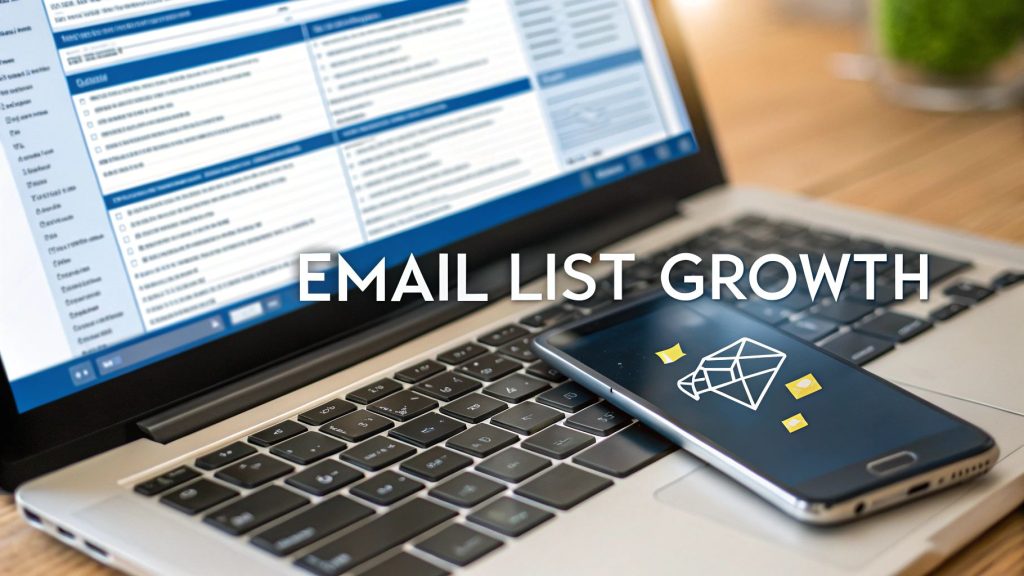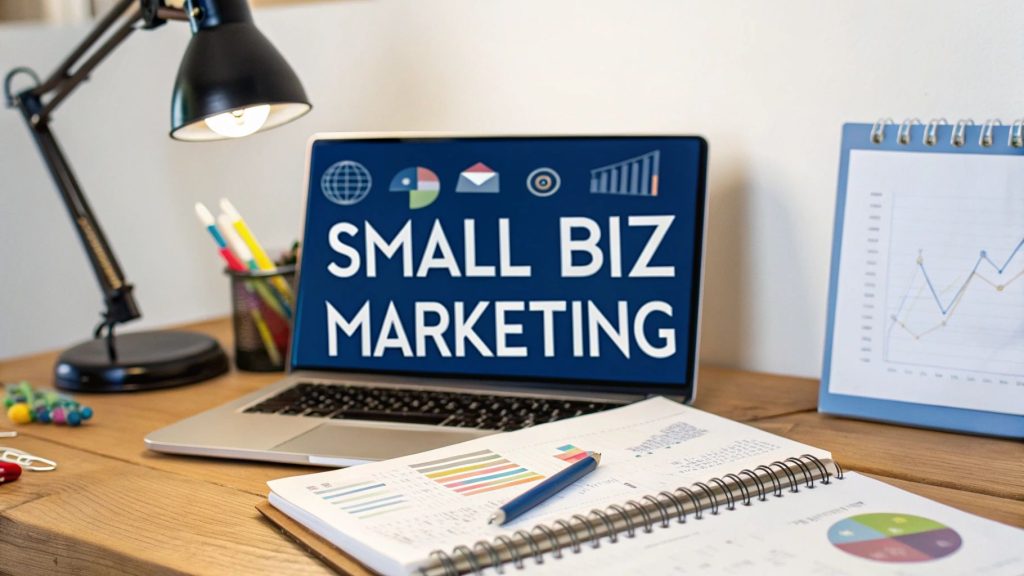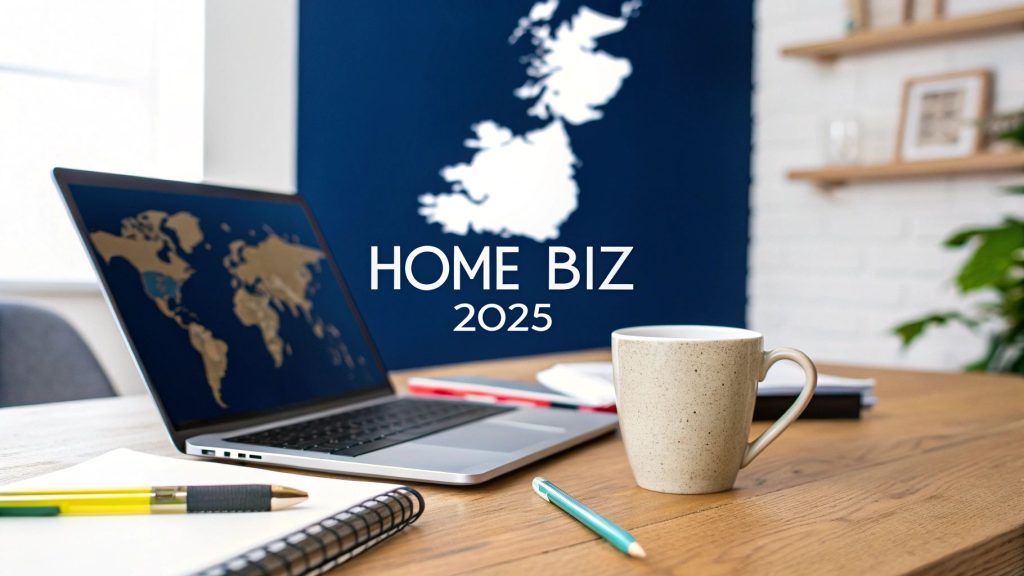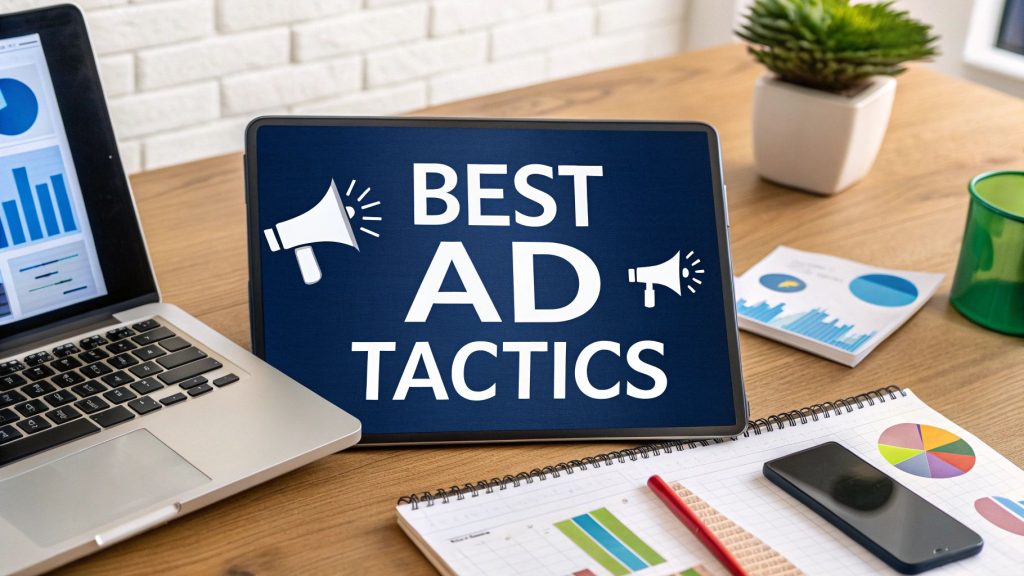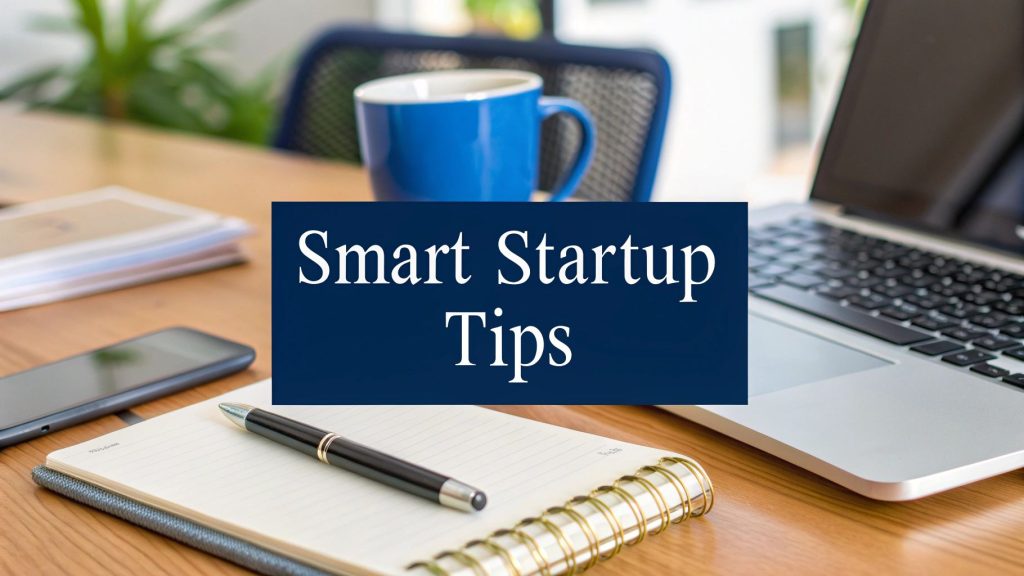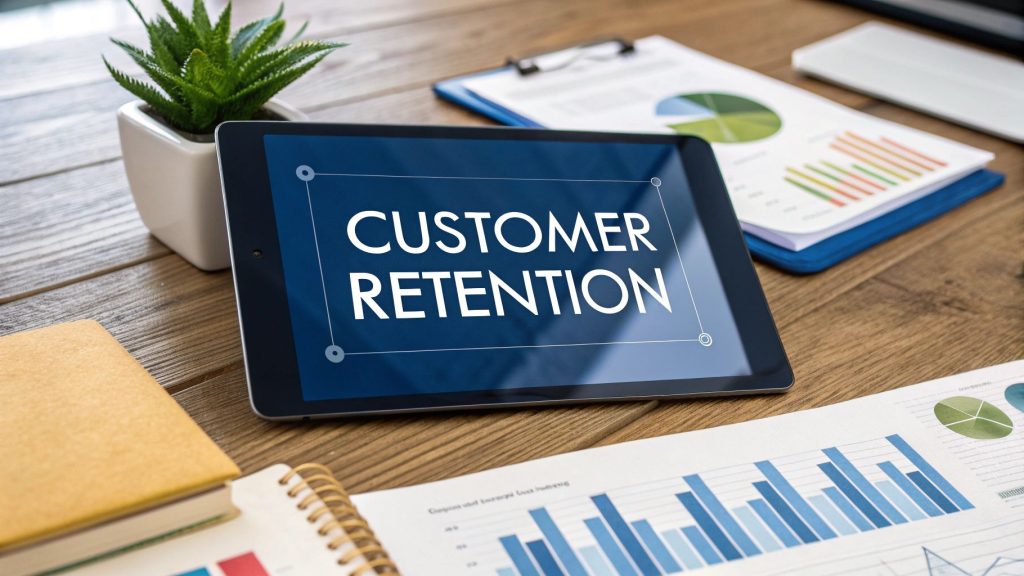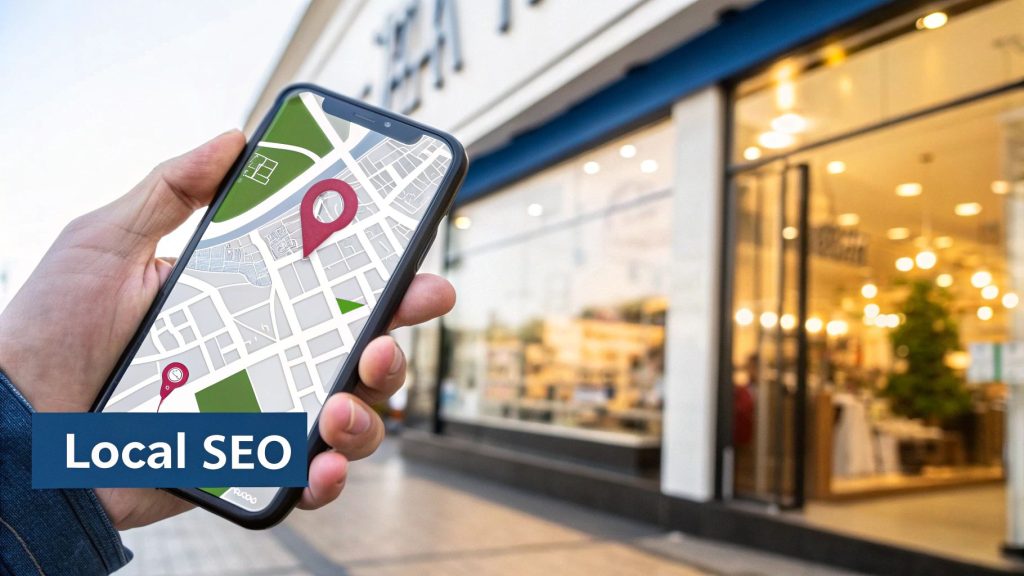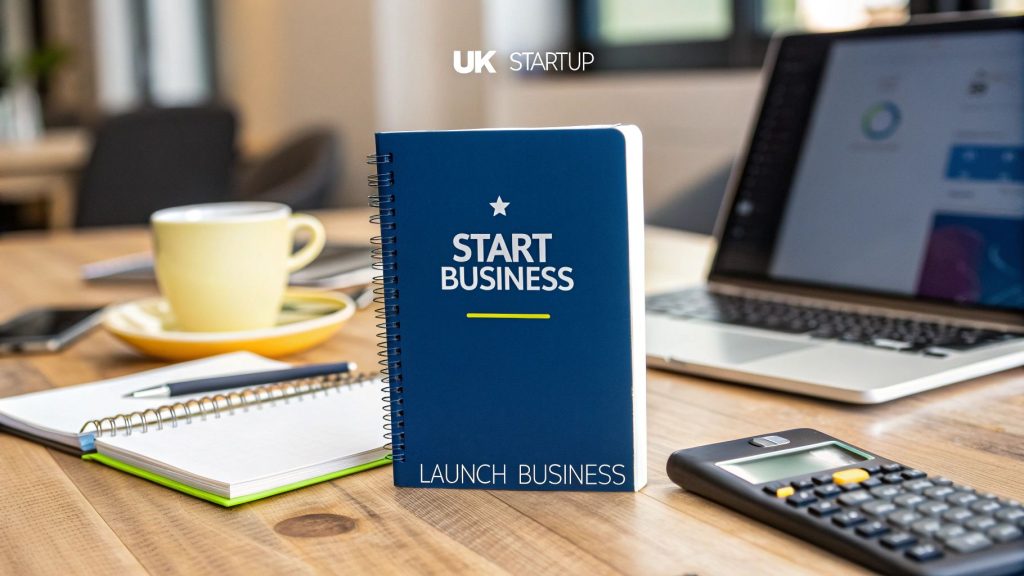Social Media Marketing for Small Business
Social Media Marketing for Small Business – Social media isn’t just for posting holiday snaps anymore. For a small business, it’s one of the most powerful and budget-friendly tools you can have. It’s your direct line to customers, a space to build a real community, and a proven way to drive sales. It puts you on a level playing field, letting you build genuine relationships that bigger, faceless brands can only dream of.
Why Social Media Is a Must for Small Businesses
Choosing not to be on social media today is like opening a shop down a quiet alleyway and forgetting to put a sign up. It’s no longer an optional extra; it’s a core part of any sensible business plan. For small businesses, social platforms offer the most direct, affordable route to finding and talking to the very people who are most likely to buy from you.
The potential audience is massive. In the UK, social media marketing has become an indispensable tool, thanks to incredible user numbers. A staggering 79% of the UK population—that’s around 54.8 million people—are active on social media. This creates a huge pool of potential customers just waiting to discover your business. You can explore more data on UK social media usage from Sprout Social.
Think of it this way: a strong digital presence, driven by great social media, can turn a local business into a bustling community hub.
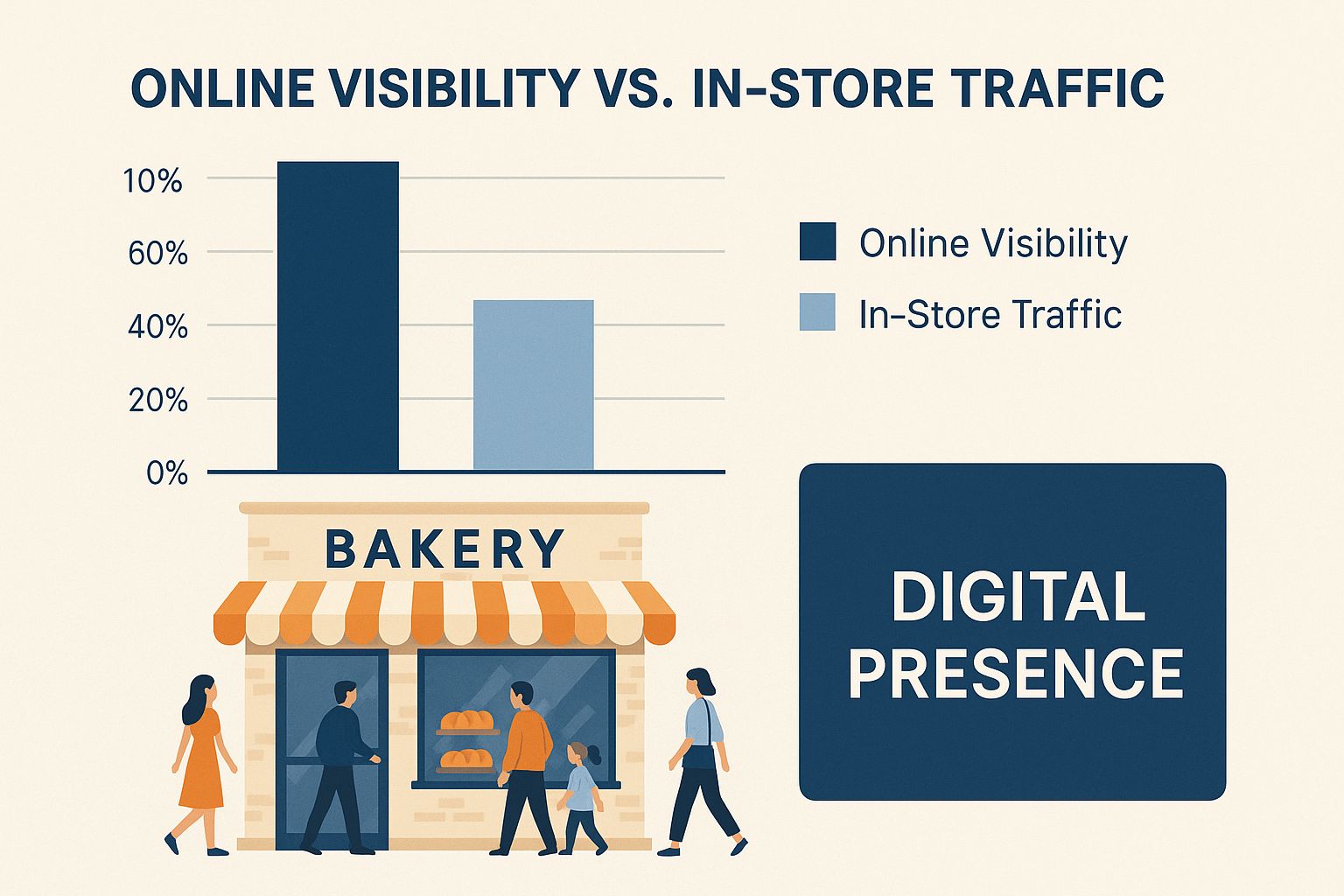
This image nails it. The ultimate goal for any small business owner is turning those online likes and comments into real people walking through your door.
Building Connections and Driving Growth
Social media is so much more than a broadcast channel. It’s about creating two-way conversations that build trust and loyalty. When customers can ask questions, get a quick reply, and see the real personality behind your brand, they feel connected. That connection is what turns a one-time buyer into a loyal fan who tells all their friends about you.
Here are a few practical ways it helps:
- Direct Customer Feedback: Platforms like Facebook and Instagram are brilliant for getting instant feedback. For example, a local café could use an Instagram poll in their Stories to ask followers which new cake they’d prefer to see on the menu next week. This not only provides valuable data but also makes customers feel involved.
- Hyper-Targeted Advertising: You can run ads aimed at incredibly specific groups of people—based on their interests, location, or age—without breaking the bank. A local dog groomer, for instance, could run a £30 Facebook ad campaign targeting dog owners within a three-mile radius of their salon to promote a new puppy package.
- Showcasing Authenticity: People buy from people. Sharing behind-the-scenes posts, introducing your team, or reposting customer photos makes your business feel human. A local florist sharing a time-lapse video of them creating a wedding bouquet on Instagram Reels builds far more trust than a generic stock photo ever could.
The secret to great social media for a small business isn’t trying to go viral. It’s about being consistently present and genuinely valuable to the right audience. Authenticity and engagement will always win against a big budget.
A Cost-Effective Marketing Channel
When you compare it to traditional advertising like print or radio spots, social media marketing offers an incredible return on investment, especially when you’re watching every penny. Your main investment is your time, but the potential rewards are enormous.
Creating your own content—known as organic content—costs nothing but a bit of creativity. As you start to see what works, you can strategically put small amounts of money into paid advertising to boost your best-performing posts. For example, if a post about your ‘top 5 gardening tips’ gets lots of organic likes and comments, spending just £10 to ‘boost’ it on Facebook could show it to thousands more local homeowners.
This flexibility makes social media the perfect marketing channel for start-ups and sole traders who need to make every pound count. By focusing on creating helpful content and fostering real connections, you can build a powerful marketing engine that grows right alongside your business.
Building a Winning Social Media Strategy
Posting on social media without a clear plan is a fast track to burnout. It’s so easy to pour time and energy into creating content that just doesn’t land or, worse, doesn’t actually help your business. A solid strategy is your roadmap, making sure every post, story, and comment has a purpose and pushes your business forward.
This framework is all about being intentional. Instead of guessing what might work, you’ll be making smart decisions that deliver real, measurable results for your small business. Honestly, a good strategy saves you time, cuts down on stress, and makes your social media marketing so much more effective.
Define Your Social Media Goals
Before you even think about creating a post, you need to be crystal clear on what you’re trying to achieve. Vague goals like “get more followers” don’t really help because you can’t measure them properly. What you need are specific objectives tied directly to your business’s success. This is where the SMART goal framework is a lifesaver.
SMART stands for:
- Specific: Nail down exactly what you want to do.
- Measurable: How will you track your progress and know when you’ve succeeded?
- Achievable: Set a realistic goal you can actually hit with your resources.
- Relevant: Does this goal genuinely align with your bigger business objectives?
- Time-bound: Give yourself a clear deadline.
A classic mistake is getting obsessed with vanity metrics like follower count. A much better goal is to increase your engagement rate by 15% in the next quarter. This shows you’re building a real community, not just a list of numbers.
Let’s put this into practice. Imagine a small, independent bookshop. Their SMART goal might be: “Increase online sales from our Instagram followers by 20% over the next six months by promoting our new releases and author events.” See how it’s specific, measurable, and directly linked to growing their revenue? That’s the kind of goal that makes a difference.
Understand Who You Are Talking To
You can’t create content that connects if you don’t know who you’re talking to. This is exactly why building a customer persona is a non-negotiable step. A persona is a detailed profile of your ideal customer, and it goes way beyond basic demographics like age and location.
Think about their motivations, their daily challenges, and their lifestyle. What are their hobbies? What kind of content do they actually enjoy scrolling through? The more detail you can add, the easier it becomes to craft posts that genuinely resonate.
For example, a boutique clothing shop might create a persona for “Professional Chloe”:
- Age: 32 years old.
- Job: A marketing manager in a creative agency.
- Pain Point: She struggles to find unique, high-quality workwear that isn’t fast fashion.
- Social Habits: She follows independent fashion designers on Instagram for inspiration and loves “behind-the-scenes” content.
Knowing this, the boutique can create content that speaks directly to Chloe. They could post styling tips for office-to-evening outfits or share stories about the sustainable fabrics they use. This is how you stop shouting into the void and start building a loyal following.
Analyse Your Competitors
Your competitors are already out there on social media, and that’s a goldmine of information. A quick competitor analysis can show you what’s working in your niche, highlight gaps in the market you could fill, and spark some great ideas for your own content. You’re not looking to copy them – you’re looking to learn from them.
Start by picking out three to five of your direct competitors. Spend a bit of time scrolling through their profiles and ask yourself a few questions:
- Which platforms are they most active on?
- What kind of content gets the most engagement (likes, comments, shares)?
- What’s their brand voice like? Is it formal, playful, or more educational?
- Are they using a particular hashtag that’s gaining traction locally?
Let’s go back to our boutique clothing shop. You might notice a competitor is getting brilliant engagement with Instagram Reels showcasing new arrivals. That’s a massive clue that short-form video works for this audience. You might also spot an opportunity—perhaps none of your competitors are using a local hashtag like #ManchesterStyle. You could jump on that, own the space, and attract local customers.
By defining your goals, understanding your audience, and learning from your competitors, you create a powerful foundation for success. For a more structured approach, you can download a free marketing plan template to help organise your thoughts and map out your entire strategy. This is the difference between simply being on social media and actually using it to grow your business.
Creating Content That Connects and Converts
Let’s be honest, the pressure to constantly churn out amazing content can feel overwhelming. But here’s the good news: great social media isn’t about having a Hollywood budget or a professional film crew. It’s about being real, showing up consistently, and giving your audience genuine value.
This is where your social media presence transforms from just being there to actually making an impact. Your content is your shop window, your conversation starter, and your golden ticket to building real relationships with the people who matter most to your business.
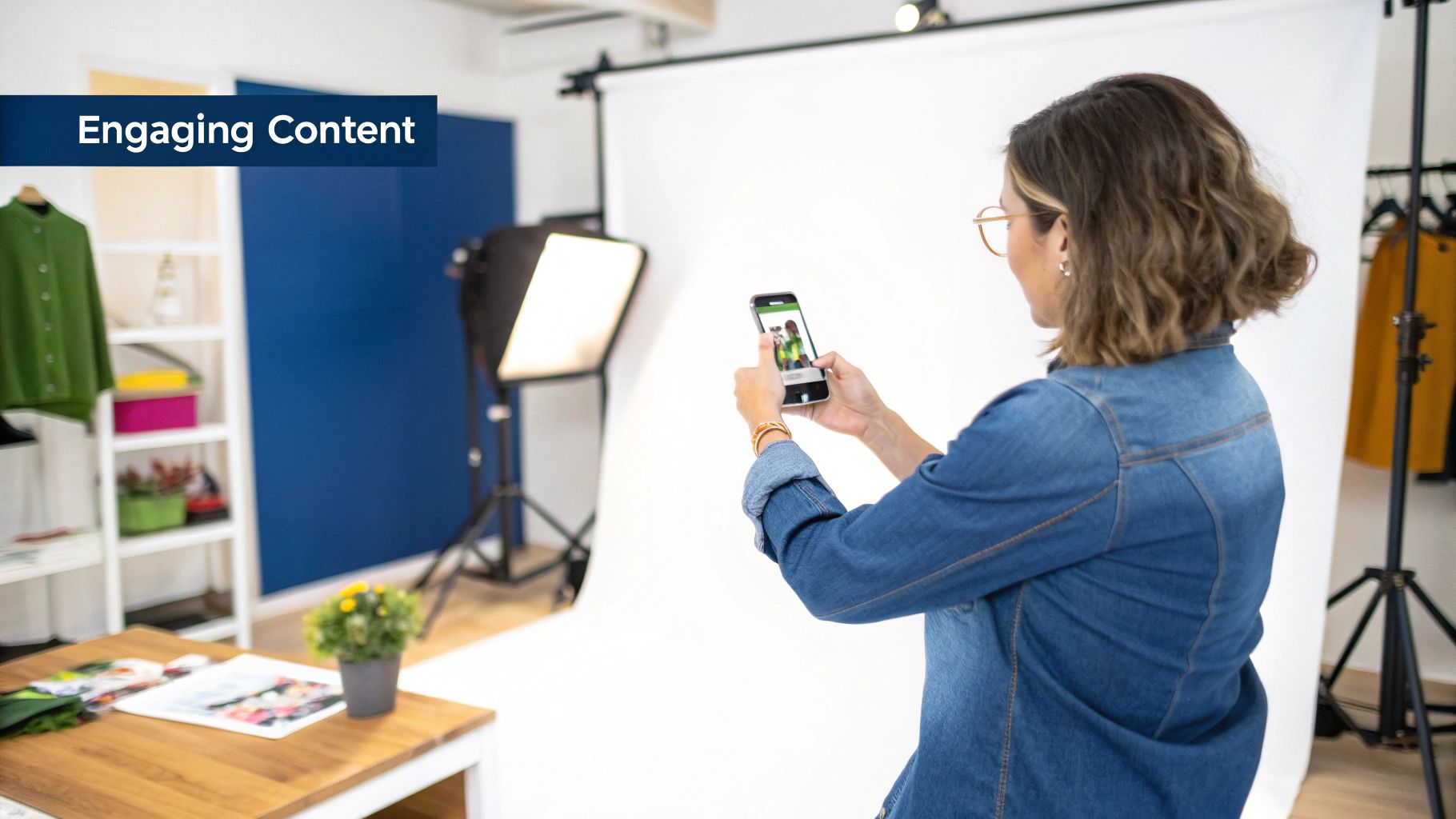
The Four Pillars of Engaging Content
To keep your audience hooked and avoid sounding like a broken record, you need variety. A balanced content plan stops you from just blasting sales messages all day—the fastest way to get unfollowed. I like to think of content as having four key pillars that hold everything up.
A solid content mix should include:
- Educational Content: This is where you share what you know. A local accountant could post a quick video explaining common tax deductions for sole traders. It builds trust and positions you as the expert. Another example is a pet shop creating a carousel post on Instagram titled “5 common houseplants that are toxic to cats”.
- Entertaining Content: This is where your brand’s personality shines. A coffee shop could create a funny Instagram Reel of a barista’s latte art fails. It’s relatable, human, and memorable. A local estate agent could post a light-hearted “Guess the price” quiz in their stories featuring a unique local property.
- Inspirational Content: Share your wins, customer success stories, or even motivational quotes that fit your industry. A personal trainer could post a client’s progress photo (with permission, of course!) to inspire others on their journey. A craft supply shop could share a beautiful project a customer made using their materials.
- Promotional Content: This is where you actually sell. Announce a new menu item, a limited-time discount, or an upcoming workshop. Just make sure this only makes up about 20% of your total posts. For example, a local restaurant could post, “This weekend only! Get a free dessert with any main course when you show this post.”
By balancing these four pillars, you create a social media feed that people actually want to follow. They’ll come for the helpful tips, stay for the personality, and be far more receptive when you do share a promotion.
Creating High-Quality Visuals on a Budget
Forget what you’ve heard. You absolutely do not need expensive camera gear to create brilliant visuals for social media. Your smartphone is more than powerful enough.
Focus on getting the basics right. Good lighting is everything—filming near a window can make a world of difference. If you’re recording a video, make sure your audio is clear. No one wants to strain to hear what you’re saying.
For graphic design, tools like Canva are a complete game-changer for small businesses. You get access to thousands of templates to create stunning, professional-looking graphics for posts and Stories, even if you have zero design skills.
The most powerful content often comes from simply showing your work. I know a local plumber who started posting simple before-and-after videos on Instagram Reels. He built immense trust and now gets more quote requests than ever before. It’s authentic, helpful, and proves his value in seconds.
This kind of raw, behind-the-scenes content often connects far more deeply with audiences than slick, expensive productions.
Writing Captions That Spark Conversation
A great visual might stop the scroll, but it’s the caption that sparks a real conversation and drives action. This is your chance to add context, tell a story, and get your followers to engage.
Here are a few tips to level up your caption game:
- Start with a strong hook. Your first sentence is crucial. Ask a question, state a surprising fact, or make a bold statement to grab attention immediately. For example, a personal trainer could start with: “Struggling to find time for the gym? Try this 15-minute workout you can do at home.”
- Tell a story. People connect with stories, not sales pitches. Instead of just saying “New product in stock,” tell the story behind it. A potter could share the inspiration behind a new glaze, explaining how a walk on a local beach influenced the colours.
- Encourage engagement. Always include a call-to-action (CTA). Ask a question, tell them to tag a friend who needs to see this, or invite them to share their own experiences in the comments. A bookstore could post a picture of a new bestseller and ask, “What’s the best book you’ve read this year? Let us know in the comments! 👇”
- Use emojis and formatting. Break up long chunks of text with emojis and line breaks. This makes your caption much easier to read on a small mobile screen.
Investing in valuable content is clearly paying off. UK small businesses are strategically shifting more of their marketing budgets to social media, and it’s easy to see why. Budgets for social content are predicted to rise by 12.5% this year, largely driven by the unstoppable popularity of short-form video. You can dig into more social media marketing trends on sqmagazine.co.uk. This trend shows that creating consistent, quality content is no longer a “nice-to-have”—it’s a central pillar of any modern growth strategy.
Proven Tactics for Growth and Engagement
Creating fantastic content is a huge achievement, but it’s really only half the battle. To get real results from social media, you need to get that content in front of the right people and start building a community that actually trusts you. This is where you move from just posting to being truly strategic, turning your profile from a simple billboard into a bustling hub for your brand.
It all starts with something simple: timing. Posting when your audience is most active dramatically increases the chance of your content being seen, liked, and shared.

Find Your Perfect Posting Times
Forget what you’ve read about a single “best time to post” that works for everyone. It doesn’t exist. The only time that matters is when your specific audience is actually scrolling through their feeds. Luckily, you don’t have to guess.
Most social platforms have free, built-in analytics tools. On an Instagram or Facebook business account, dive into your Insights or Analytics tab. You’ll find a breakdown of when your followers are most active, both by day of the week and hour of the day.
Start by testing these peak times. Post your most important content during these windows for a couple of weeks and watch your engagement rates. You might find that while your audience is online at 8 PM, they’re more likely to engage during their lunch break around 1 PM. This data is your secret weapon.
Harness the Power of Hashtags
Hashtags are your ticket to reaching people beyond your current followers. Think of them as signposts that help people interested in your niche discover your content. Using them correctly is a simple but incredibly powerful way to boost your visibility.
A smart hashtag strategy isn’t just about quantity; it’s about variety. You need a mix:
- Broad Hashtags: These are popular, high-volume tags like
#CoffeeShopor#BookLover. They offer huge reach but can be very competitive. - Niche Hashtags: These are far more specific to what you do—think
#ArtisanRoasteror#IndieBookshopUK. The audience is smaller but way more targeted and engaged. - Location-Based Hashtags: For any business with a physical shop or local service area, these are non-negotiable (e.g.,
#BristolCoffee,#ManchesterEats). They attract nearby customers.
For instance, a local bakery in Bristol could use a mix like #BristolBakery (location), #SourdoughBread (niche), and #FreshlyBaked (broad). This combination helps them pop up in searches for local customers, baking enthusiasts, and general foodies all at once.
Engage Authentically with Your Community
Social media is a two-way street. Building a thriving community isn’t just about broadcasting your message; it’s about listening and taking part in the conversation. This is what turns passive followers into loyal fans.
That means responding to comments and DMs promptly and personally. Acknowledge positive feedback with a genuine thank you, and address questions or concerns helpfully. When people see a real person is behind the account, it builds immense trust.
Another brilliant tactic is encouraging user-generated content (UGC). This is any content—photos, videos, reviews—created by your customers. A local coffee shop could run a monthly competition, asking customers to share photos with their coffee using a specific hashtag. The prize? A free cake. Resharing this content gives you a steady stream of authentic posts and makes your customers feel valued and part of your story.
The goal of engagement is to make every follower feel seen and heard. A simple, personalised reply to a comment can be more powerful than a post that gets a thousand likes but has zero interaction.
Demystifying Paid Advertising
While organic growth is crucial, paid ads can be a powerful accelerator, especially when you have a specific goal in mind. And you don’t need a massive budget to see results. Even a small, targeted ad spend can deliver a significant return.
Let’s go back to that Bristol coffee shop. Imagine they want to promote a new loyalty programme. They could set up a Facebook ad campaign with a budget of just £50. They can then target this ad to people who live within a two-mile radius of their shop, are aged 25-50, and have shown an interest in “coffee” and “local business”.
This laser-focused targeting ensures their ad is only shown to the most relevant local audience, maximising their budget and driving foot traffic. For small businesses looking to make every pound count, exploring some proven low-cost marketing strategies for startups can provide even more ideas on how to stretch your budget effectively. Paid social ads are just one piece of a much larger, affordable marketing puzzle.
How to Measure Your Social Media Success
So, you’re creating great content and engaging with your audience—but is it actually working? Pouring your time and energy into social media without tracking the results is like driving without a map. This is where a little bit of data analysis comes in, and it’s much simpler than it sounds.
Measuring your success isn’t about getting lost in complicated spreadsheets. It’s about using the free, built-in analytics tools on platforms like Instagram and Facebook to understand what’s connecting with your audience and what isn’t. This is how you make smart, data-informed decisions that directly contribute to your business goals.
Key Metrics That Actually Matter
Forget chasing vanity metrics like follower count. A large following means nothing if nobody is interacting with your posts or buying from you. Instead, you need to focus on the numbers that tell the real story of your performance.
These are the core metrics you should be tracking:
- Engagement Rate: This is the big one. It measures the percentage of your followers who actually interact (like, comment, share, save) with your content. A high engagement rate shows you’re building a real community, not just collecting numbers.
- Reach: This tells you the total number of unique people who saw your post. It’s a great indicator of how well your content is spreading beyond your immediate followers, especially through shares and hashtags.
- Click-Through Rate (CTR): This is the percentage of people who clicked the link in your post, bio, or story. If your goal is to drive traffic to your website or a product page, this metric is absolutely crucial. For example, if 1,000 people saw your Instagram Story and 50 people ‘swiped up’ on your link, your CTR would be 5%.
Your goal isn’t to be a data scientist. It’s to be a business owner who can spot a trend. A sudden spike in engagement on a ‘behind-the-scenes’ video tells you your audience loves that type of content—so make more of it!
Using Built-In Analytics Tools
You don’t need to pay for fancy tools to get started. Both Instagram and Facebook offer powerful, free analytics dashboards right within their apps, usually called “Insights” or “Analytics.”
Let’s imagine you run a local bakery. You post two things one week: a beautiful, professional photo of a new cake and a quick, behind-the-scenes video of your team decorating it. By diving into your Instagram Insights, you might discover:
- The professional photo got lots of likes (a fairly passive form of engagement).
- The behind-the-scenes video got fewer likes but a huge number of comments and shares, and its reach was three times higher.
This data is gold. It tells you that while polished photos are nice, your audience craves authentic, personal content. That insight gives you a clear direction for your future content strategy. By focusing on what works, you’ll naturally improve your customer retention strategies, as you’re consistently delivering the content your audience wants to see.
A Simple Monthly Review Framework
You don’t need to spend hours on this. Just set aside one hour at the end of each month to review your performance. This simple check-in keeps you on track and stops you from wasting time on tactics that aren’t delivering.
Your monthly review should answer three simple questions:
- What Worked? Identify your top 3 posts based on engagement or reach. What did they have in common? Was it the format (Reel, carousel), the topic, or the time you posted? For instance, you might notice all three top posts were short videos featuring a member of your team.
- What Didn’t Work? Find your bottom 3 posts. Don’t be discouraged—this is valuable information! Why do you think they fell flat? Perhaps they were too promotional, or the image wasn’t eye-catching enough.
- What Will We Do Differently? Based on your answers, set one or two simple goals for the next month. For example: “We will post one more behind-the-scenes Reel per week and reduce our promotional posts from four to two per month.”
This simple process of tracking, analysing, and adapting is the key to turning your social media efforts into a measurable driver of business growth. For UK SMEs, this approach is paying off. Research shows that 69% of these businesses find social media advertising more cost-effective than traditional paid search. On top of that, those investing over 25% of their marketing budget into social channels see 32% faster revenue growth. You can discover more insights about social media’s business impact from Gambit Partners.
Common Social Media Marketing Questions
Getting started with social media always brings up a few questions. It’s completely normal. To help you push past those last few hurdles, here are some straight-talking answers to the queries we hear most often from small business owners.
How Much Time Should I Spend on Social Media?
This is the big one, isn’t it? Forget the idea that you need to be glued to your phone for hours. The secret isn’t intensity; it’s consistency.
For most small businesses, aiming for a manageable 3-5 hours per week is a fantastic starting point. The trick is to work smarter. Spend one block of time batch-creating your posts for the week ahead and pop them into a scheduling tool.
Then, all you need is 15-20 minutes each day to be present. Reply to comments, answer messages, and interact with a few other accounts in your niche. This consistent daily check-in builds far more momentum than a frantic, multi-hour session once a fortnight.
Which Platform Is Best for My Service Business?
Stop trying to be everywhere at once. The right platform is simply the one where your ideal customers are already hanging out.
Think about how you can best show off what you do:
- For highly visual services – think interior design, cake decorating, or landscaping – Instagram and Pinterest are non-negotiable. They’re built for showcasing stunning results. A landscape gardener can create a portfolio of before-and-after garden transformations that speaks for itself.
- For professional B2B services like accountancy, IT support, or business coaching, LinkedIn is your digital handshake. It’s the home of professional credibility. An accountant can share articles about new tax laws or tips for managing cash flow to attract business clients.
- For almost any local service provider, from plumbers to personal trainers, Facebook is still a powerhouse. Nothing beats it for building a local community hub and running ads targeted to your specific postcode. A local plumber can get immense value from customer reviews and recommendations shared within local Facebook groups.
The biggest mistake I see small businesses make is treating social media as a megaphone for promotions. Real success comes from building a community, and that requires a two-way conversation. Focus on sparking dialogue and providing genuine value. That’s how you create fans, not just followers.
Do I Really Need to Pay for Ads?
Look, it’s possible to grow with brilliant, niche content alone. But it’s slow. Think of paid ads as a powerful accelerator for what you’re already doing right.
Don’t see a small budget—even just £5-£10 per day—as an expense. See it as a strategic investment.
Paid ads are the quickest and most reliable way to:
- Reach brand new, highly relevant customers who don’t follow you yet.
- Guarantee your best content actually gets seen by a wider audience.
- Generate qualified leads and drive people directly to your website.
- Gather priceless data on what messages and images really connect with your audience.
Putting a small ad budget behind your top-performing organic posts is the smartest way to get maximum return on your efforts. It turns your social media from a hopeful experiment into a predictable engine for growth.
At Grow My Acorn, we believe every small business deserves the tools and knowledge to succeed. Explore our resources to build a marketing strategy that delivers real results. Find out more at https://growmyacorn.co.uk.


